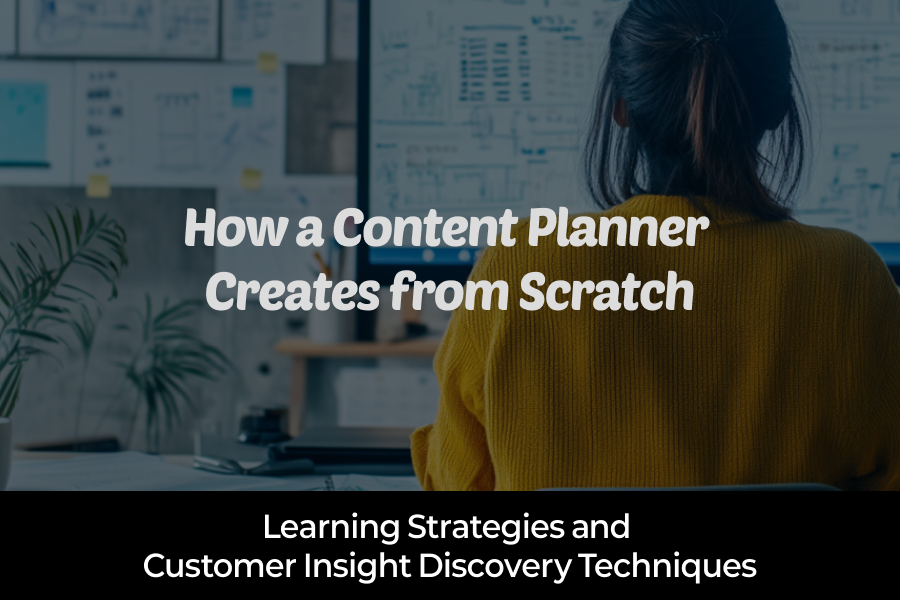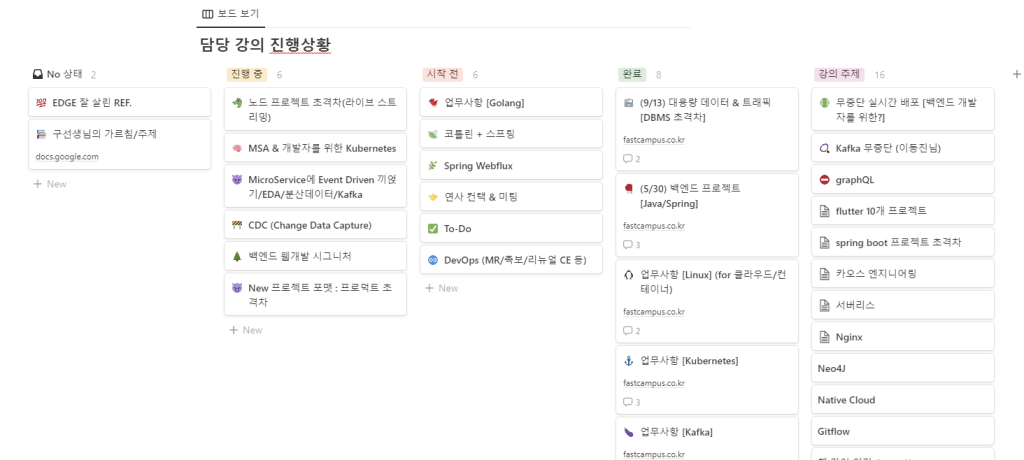How Am I Supposed to Do That?

🎲 Game Changer: Ha-eun Bang, Content Planning Team Leader at FastCampus
Brand New, Everything is Brand New
Content planners often have to work in areas where they lack background knowledge or experience, depending on their company, projects, or clients. When everything feels unfamiliar, a successful plan demands an enormous amount of learning.
At FastCampus, content planners constantly live with this reality, mastering topics that may not even be their field of interest, let alone their expertise. They must stay ahead of trends and even uncover market needs that aren’t yet visible. A solid grasp of the basics is crucial for effective communication with instructors and industry insiders.
Ha-eun Bang thrives on this challenge. Her ability to learn quickly and read industry trends earned her a leadership role. We’ll dive into her story to uncover her tips on mastering new domains and planning content that sets market trends.
Learning Junkie on the Rise
At FastCampus, each course category forms a “team,” and as the category grows, subcategories form “cells” that specialize. Currently, Team 1 handles programming, while Ha-eun leads the “cell” for Back-end and DevOps courses.
Joining FastCampus as a conversion intern last April, Ha-eun became a team leader within a year. She’s already had several successful courses under her belt. Her rapid rise, rare in the industry, is largely due to her thirst for learning.
Changer Says
“I love learning. Studying the same topic over and over can get boring, but since we launch new content every month or two, I’m always diving into something new, and that keeps things exciting.”
Organized Learning with Notion
Ha-eun’s “learning junkie” side is fully visible on her Notion board, where she’s recorded everything she’s learned since her first day creating programming courses.

The board includes pages dedicated to course topics and essential concept breakdowns. It tracks courses from production to post-launch management and even ideas on hold due to insufficient market demand. Every page is filled with detailed market analyses, case studies, and planning specifics.
The most eye-catching page on her Notion board? The “Unknown Terms” section.
Step One: Memorizing to Master the Basics
 |  |
The hardest part of learning an unfamiliar field is figuring out where to start, especially in highly specialized or technical areas.
Ha-eun’s first step was to compile a glossary. Just as if she were learning new English vocabulary, she listed unknown terms from developer job listings and FastCampus’s existing programming course pages. Then, she researched each term—what it meant and why it was important. Job posting buzzwords often indicate key market demands, while content planners carefully select core terms for their course pages. Understanding these terms was like breaking out of “illiteracy” in the field.
Learning is Just the Beginning: Unearthing Customer Needs
Learning for the sake of learning isn’t enough for a content planner. Once you’ve mastered the basics, it’s time to use that knowledge to uncover customer needs and move on to the next phase. For Ha-eun, learning is Stage 0, and Stage 1 is pinpointing those needs.
Changer Says:
“Before becoming a content planner, I worked in marketing, particularly performance marketing, which focuses on the final stages of a customer’s journey. I’ve carried that interest into content planning. Often, I start planning a course by looking at what marketing materials users respond to. If a particular marketing piece gets a lot of attention, it’s usually a sign that there’s demand for related content.”
The key to Ha-eun’s successful planning lies in how she identifies customer needs. She collects individual needs and rolls them into a larger, marketable concept. She has three main ways of doing this:
- Checking which marketing materials for existing courses generated the most interest and examining their focus points.
- Surveying current students to ask, “Which topic within the course package made you want to enroll?”
- Monitoring developer communities to see why buyers chose existing courses.
From there, Ha-eun scales those key needs into new courses.
 |  |
The course Mastering High-Traffic and Big Data Processing was born from feedback on the course Mastering Back-end Web Development with 10 Projects. Many students requested a course on handling large data sets. After investigating, Ha-eun found that many back-end developer job postings required this skill. However, while job seekers knew they needed this knowledge, they didn’t know exactly what to learn. Ha-eun dove into research, consulted with instructors, and built a curriculum that met the market’s demands. The result? A hit course that addressed a real market gap.
Mix and Match: Creating New Ideas
Changer Says:
“I personally love creating the ‘first’ or the ‘latest’ courses. If it’s something that’s never been done before and could have a major impact on someone’s life, that’s really meaningful. But ‘first’ often means it’s an untested market, so I often mix two themes. I combine an older, established topic with a new, trendy one. The weaknesses of each get balanced out, resulting in a solid plan.”
At FastCampus, the terms “first” and “latest” refer to planning courses that cover topics no one else has tackled or the latest technologies and trends. Ha-eun’s course Advanced Linux: Cloud Management and Performance Analysis was a mix of two such themes.

While working on a Linux course revamp, Ha-eun noticed many of the included technologies were outdated. Other Linux courses also focused on fading trends. Meanwhile, Ha-eun had just worked on cloud technology courses and saw an opportunity. She combined the older topic of Linux with the emerging field of cloud technology, creating a completely new course.
It wasn’t easy. Finding an instructor experienced in back-end, Linux, and cloud technology took two months. But her persistence paid off—the course garnered significant attention, and the instructor received two book deals based on the course content.

The Thrill of the Uncertain Payoff
When asked about the happiest moment in her role as a content planner, Ha-eun paused, then shared the most thrilling moment instead.
Changer Says:
“The most thrilling thing is when a course I planned—especially one that was risky—turns out to be a success. It’s about proving the marketability of an untested field. There’s always risk, so I really put in the work to find a reason it’ll succeed. But when it pays off, it’s incredibly satisfying. I want to keep creating more ‘first’ and ‘latest’ courses in the future.”
✍️Key Takeaways
- Feeling stuck at the start of a learning process? Begin by defining the key terms. This can help guide your study path.
- Identifying existing customers’ needs on a granular level is critical. Surveys aren’t the only way to do this.
- Even the best educational content needs market appeal to succeed. The educational impact only happens when it reaches people.
- If one topic has weaknesses, try combining it with another. Mixing and matching can lead to stronger ideas.